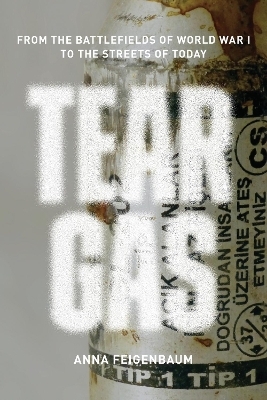
Tear Gas
From the Battlefields of World War I to the Streets of Today
Seiten
2017
Verso Books (Verlag)
978-1-78478-026-5 (ISBN)
Verso Books (Verlag)
978-1-78478-026-5 (ISBN)
The story of how a chemical weapon went from the battlefield to the streets
One hundred years ago, French troops fired tear gas grenades into German trenches. Designed to force people out from behind barricades and trenches, tear gas causes burning of the eyes and skin, tearing, and gagging. Chemical weapons are now banned from war zones. But today, tear gas has become the most commonly used form of "less-lethal" police force. In 2011, the year that protests exploded from the Arab Spring to Occupy Wall Street, tear gas sales tripled. Most tear gas is produced in the United States, and many images of protestors in Tahrir Square showed tear gas canisters with "Made in USA" printed on them, while Britain continues to sell tear gas to countries on its own human-rights blacklist.
An engrossing century-spanning narrative, Tear Gas is the first history of this weapon, and takes us from military labs and chemical weapons expos to union assemblies and protest camps, drawing on declassified reports and witness testimonies to show how policing with poison came to be.
One hundred years ago, French troops fired tear gas grenades into German trenches. Designed to force people out from behind barricades and trenches, tear gas causes burning of the eyes and skin, tearing, and gagging. Chemical weapons are now banned from war zones. But today, tear gas has become the most commonly used form of "less-lethal" police force. In 2011, the year that protests exploded from the Arab Spring to Occupy Wall Street, tear gas sales tripled. Most tear gas is produced in the United States, and many images of protestors in Tahrir Square showed tear gas canisters with "Made in USA" printed on them, while Britain continues to sell tear gas to countries on its own human-rights blacklist.
An engrossing century-spanning narrative, Tear Gas is the first history of this weapon, and takes us from military labs and chemical weapons expos to union assemblies and protest camps, drawing on declassified reports and witness testimonies to show how policing with poison came to be.
Anna Feigenbaum is co-author of the book Protest Camps, and her work has appeared in Vice, The Atlantic, Al Jazeera America, The Guardian, Salon, Financial Times, Open Democracy, New Internationalist, and Waging Nonviolence. She is a Senior Lecturer in the Faculty of Media and Communication at Bournemouth University. Her website is www.annafeigenbaum.com. Follow her on Twitter: @drfigtree.
| Erscheinungsdatum | 06.11.2017 |
|---|---|
| Verlagsort | London |
| Sprache | englisch |
| Maße | 140 x 210 mm |
| Gewicht | 294 g |
| Themenwelt | Geschichte ► Allgemeine Geschichte ► 1918 bis 1945 |
| Geschichte ► Allgemeine Geschichte ► Zeitgeschichte | |
| Geschichte ► Teilgebiete der Geschichte ► Militärgeschichte | |
| Sozialwissenschaften ► Politik / Verwaltung | |
| Sozialwissenschaften ► Soziologie | |
| ISBN-10 | 1-78478-026-X / 178478026X |
| ISBN-13 | 978-1-78478-026-5 / 9781784780265 |
| Zustand | Neuware |
| Haben Sie eine Frage zum Produkt? |
Mehr entdecken
aus dem Bereich
aus dem Bereich
ein Psychologe erlebt das Konzentrationslager
Buch | Hardcover (2024)
Kösel (Verlag)
CHF 30,80
Mythos „Stauffenberg-Attentat“ – wie der 20. Juli 1944 verklärt und …
Buch | Hardcover (2024)
Goldmann (Verlag)
CHF 33,55
die letzte Woche des Dritten Reiches
Buch | Softcover (2023)
C.H.Beck (Verlag)
CHF 22,40


